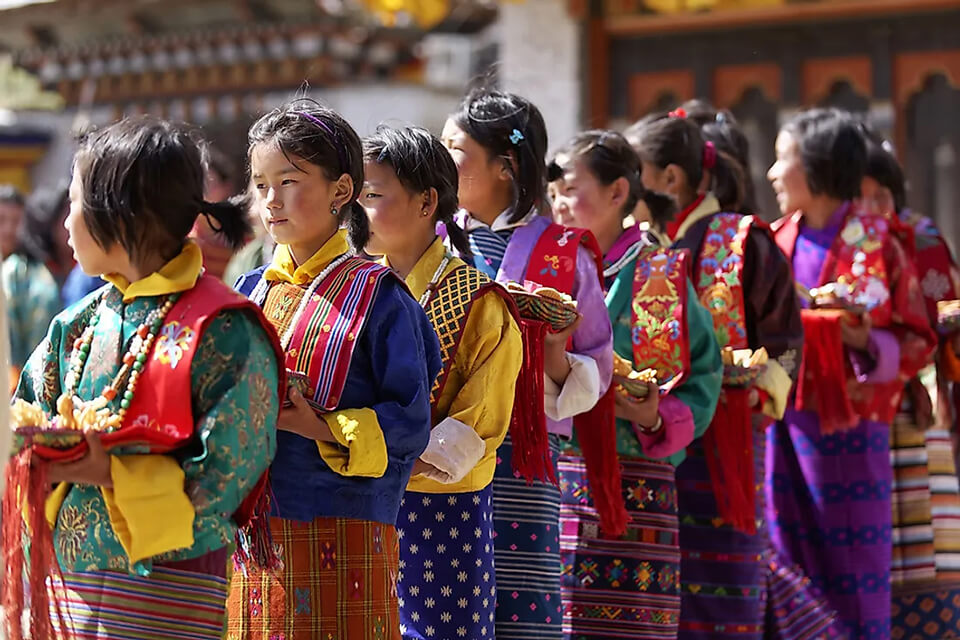Bhutan is a country deeply rooted in its heritage and culture. The Bhutanese people take pride in their well-preserved traditions, which are evident in their clothing, cuisine, and language. These cultural elements are a testament to their connection with their age-old legacy, and they set Bhutan apart from the rest of the world.
One of the most visible symbols of this rich culture is the way Bhutanese people dress and their courteous demeanor, which distinguishes them from others. This distinctive dress code and behavior are the legacy of Ngawang Namgyal, the unifier of Bhutan. During the 17th century, he played a pivotal role in establishing a traditional dress code for both men and women in Bhutan. This dress code serves as a symbol of their unique identity and is not just a matter of choice; it’s a cultural obligation. It underscores the importance of wearing traditional attire for every local Bhutanese, as it plays a crucial role in promoting and preserving their exceptional culture.
Bhutan Traditional Dress for Men
The traditional attire for men in Bhutan is known as “Gho,” and it plays an integral role in the country’s cultural identity. Here’s a breakdown of the components that make up the Bhutanese men’s traditional dress:
Gho
The Gho is a large knee-length robe that forms the foundation of the traditional male outfit. It features intricate patterns, often characterized by plaid and striped designs in a variety of colors like orange and yellow. The Gho is skillfully wrapped around the body and secured with a “Kera,” which is a woven fabric belt adorned with a plethora of colors and patterns. The Kera is worn at the waist and creates a sizable pocket in front of the abdomen, allowing men to carry essentials like wallets and mobile phones. Underneath the Gho, men typically wear a long-sleeved and short white jacket known as “Toego” or “Tego.”
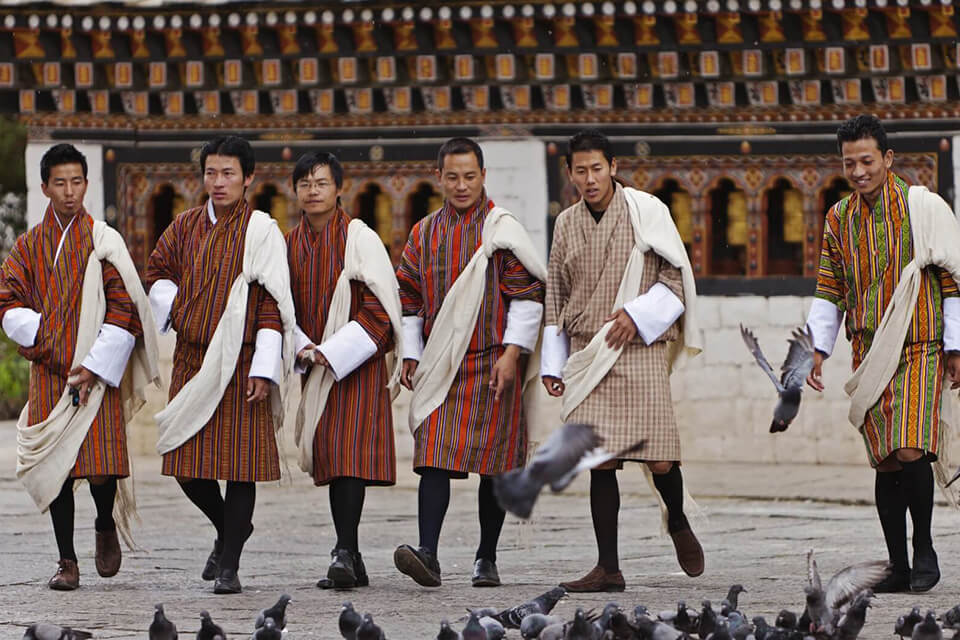
Kabney
The Kabney is an essential accessory that accompanies the Gho, particularly on formal occasions or when visiting the Dzong (a fortified monastery or administrative center). It is a large silk scarf that drapes over the Gho from the left shoulder to the right hip. The color of the Kabney varies according to the individual’s position in society. For instance, saffron Kabney is reserved for the Druk Gyalpo (the Bhutanese King) and the chief abbot, while ministers and cabinet members wear orange Kabney. Blue Kabney is for members of the legislature, green for those in the judiciary, and white for common men. Some Kabneys also feature stripes with different colors, which denote various ranks or positions. For instance, white Kabney with blue stripes is worn by members of the National Assembly, while white Kabney with red stripes is worn by village headmen (head of gewogs).
Tsho Lham
Tsho Lham refers to the traditional Bhutanese shoes for men. These shoes hold significant cultural and spiritual importance. It is believed that when a man wears Tsho Lham, he gains the privilege to visit any Lhakhang (Bhutanese temple or monastery) throughout the country. These shoes are a symbol of reverence and respect for Bhutan’s spiritual heritage.
The Bhutanese traditional dress, including the Gho and its accompanying accessories, is not just a matter of clothing; it represents the rich cultural tapestry and the deep-rooted traditions of this enchanting Himalayan kingdom.
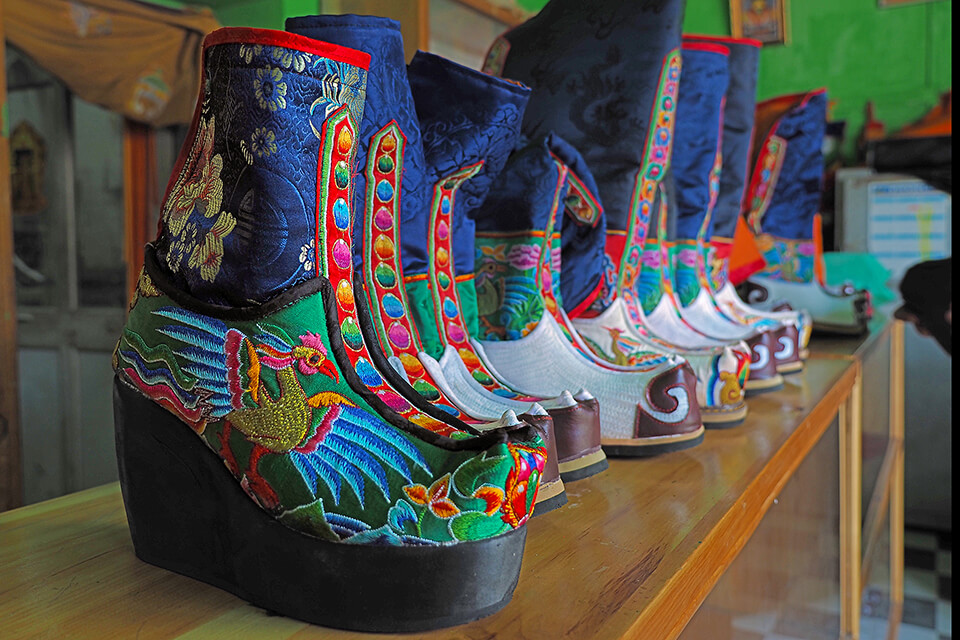
Bhutan Traditional Dress for Women
The traditional dress for women in Bhutan is known as the “Kira,” a garment that reflects the elegance and cultural identity of Bhutanese women. Here’s a breakdown of the components that make up the Bhutanese women’s traditional dress:
Kira
The Kira is a long, ankle-length dress made from a rectangular piece of woven fabric. It is draped and wrapped around the body and secured in place by pinning it at both sides with a pair of clips called “Komas.” These Komas are typically made from silver or silver gilt and often feature a small piece of turquoise set in the center.
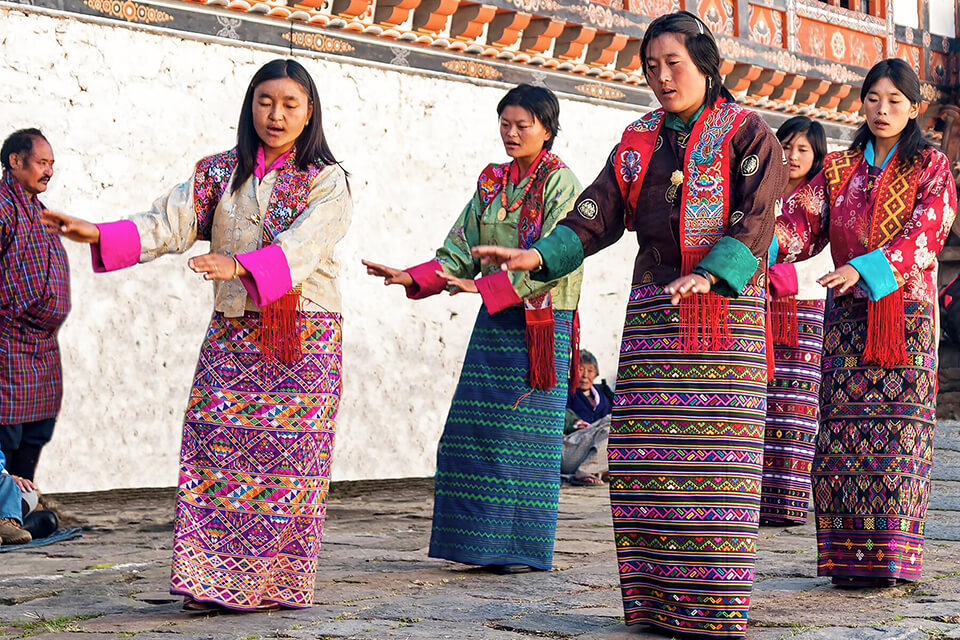
Kera
Similar to men, women in Bhutan secure their attire with a fabric belt at the waist known as “Kera.” However, the style and colors of Keras for women differ from those of men, with women’s Keras being more intricate in design and colors.
Toego
Underneath the Kira, women wear a garment called “Toego.” The Toego is designed to enhance the overall appearance and is an important component of the Bhutanese women’s traditional dress.
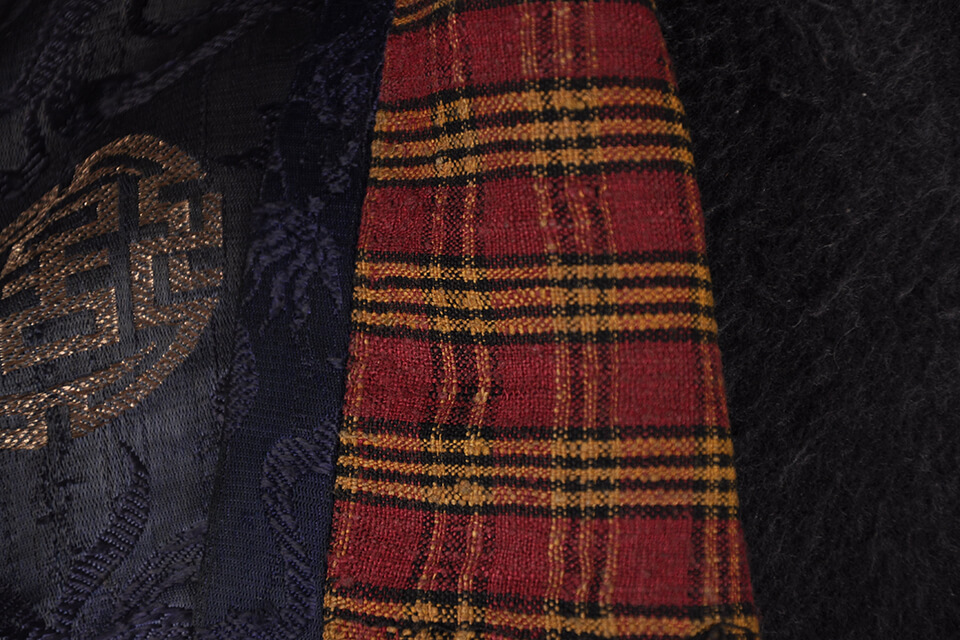
Wonju
Another layer of the outfit is the “Wonju,” a long-sleeved jacket that is worn over the Kira. Wonjus are crafted from a variety of materials, including silk, cotton, or polyester, and they come in a wide range of colors.
Rachu
The Rachu is an integral part of the traditional Bhutanese women’s attire, similar in function to the Kabney worn by men. It is a large silk scarf that is draped over the left shoulder during special occasions. The color of the Rachu often signifies the woman’s social status or position. Most Bhutanese women wear a red Rachu with intricate designs. The way it is draped on the left shoulder carries cultural and symbolic significance.
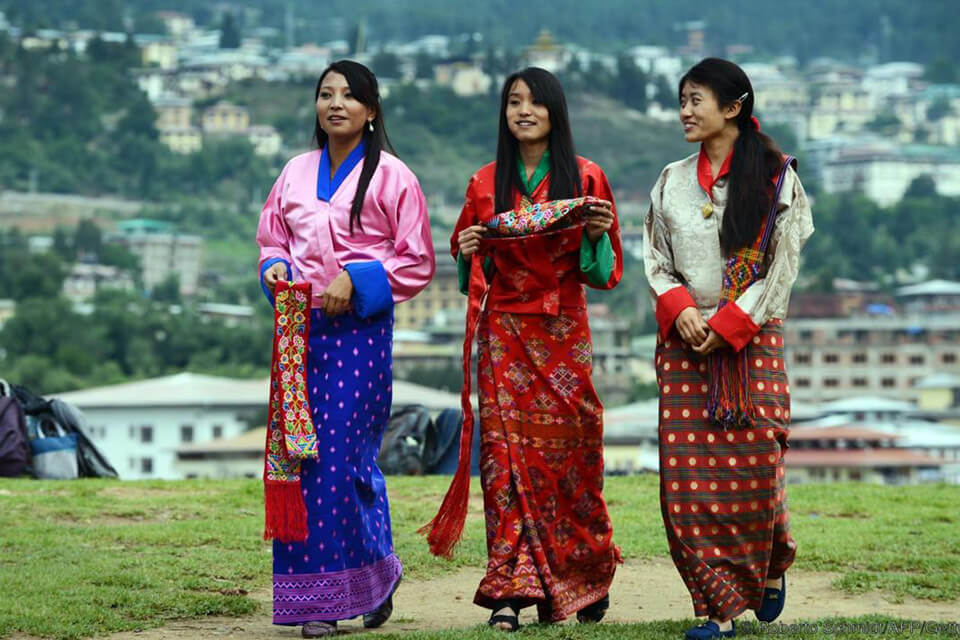
Bhutanese traditional dresses, such as the Kira and its accompanying accessories, are more than just clothing; they are a reflection of the nation’s rich culture and heritage. They have been an enduring symbol of Bhutanese identity through the ages and continue to play a pivotal role in preserving and celebrating the country’s cultural legacy.
Once in Bhutan holiday, it is worth for everyone to wear the Gho or Kira to interact with the local people to get a remarkable experience in this beautiful country.By donning the Gho or Kira, you become a part of the cultural tapestry, allowing you to connect with locals more easily, engage in conversations, and participate in traditional events and ceremonies. It’s a wonderful way to showcase your respect for Bhutan’s customs and heritage, fostering a deeper connection with the people and the land, and making your visit truly remarkable.

